Published 8 December 2019 ● Last Updated on 16 July 2020
We live in a time of paradoxes. We are cutting down forests to create more agricultural land to provide food to our ever-growing population. Yet, we have people who are starving (1 in every 9 persons are undernourished in the world today). At the same time, we have a huge amount of food wastage and loss that occurs annually (1/3rd of food produced or 1.3 bn tonnes is lost or wasted in the production process, as per F.A.O.)
Why can’t we simply channel the “lost and wasted” food to where it is actually wanted?
‘Food losses’ occur primarily farm-to-market, but as consumers, we have a big role to play in managing the ‘food waste’ problem that is created market-to-table. Indeed, consumers can play a n active role in reducing it. The responsibility lies with each of us to ensure that we are able to cut down on food wastage in our homes and communities. But one man in Singapore is doing much more than that; meet Daniel Tay – the founder of SG Food Rescue. Daniel leads an army of dedicated volunteers who “rescue” nearly 2000 kg of fresh food every week and divert it away from the landfill!
How does the group “rescue” food? Why does the produce need to be rescued in the first place? From issues of overstocking of fruits and vegetables, to aesthetic issues of ‘ugly’ or imperfect shape, to the challenges of stocking over-ripe items… the reasons vary widely. But the end result is that a mountain of food waste ends up in Singapore’s trash bins and in fact, it is the 2nd-heaviest category (after plastics) in our incinerators!
Financial planner turned freegan influencer, Daniel realised that the amount of food waste in SG was shocking and something had to be done about it; so he did. The rest of the story in his words…
In conversation with Daniel Tay, Founder of SG Food Rescue

SG: Let’s begin with numbers, how bad is the food wastage problem in Singapore?
DT: In 2018, Singapore generated 763,000 tonnes of food waste. That’s about 2x the total weight of every single person in Singapore.
SG: Tell us a bit about your personal journey from a consumer to a freegan?
DT: In 2017, I ran a simple experiment on food waste. I asked my neighbours for their unwanted but edible food. I found out that my three immediate neighbours regularly threw away enough edible food to feed me every day. So, I started to collect their surplus food for my own consumption daily. This gradually progressed to asking businesses for their unwanted food, which eventually became SG Food Rescue.
SG: When you set off on your current path, what were the top 3 things that you learnt about food wastage in Singapore?
DT: The top 3 things I learnt were,
ONE: Much of the food waste generated by the food supply chain in Singapore is not spoiled or rotting food, but simply food that doesn’t look good enough to sell. Mind you, it is still perfectly edible! This accounts for more than half of the food discarded, based on our experience.
TWO: Consumers pay for ALL the waste generated, eventually as the cost of food waste is factored into the food prices. But not everyone can afford to pay for it. There are an estimated 390,000 food insecure people in Singapore.
THREE: If we could salvage all the food waste and redistribute it to the food insecure, we could eliminate food insecurity in Singapore.
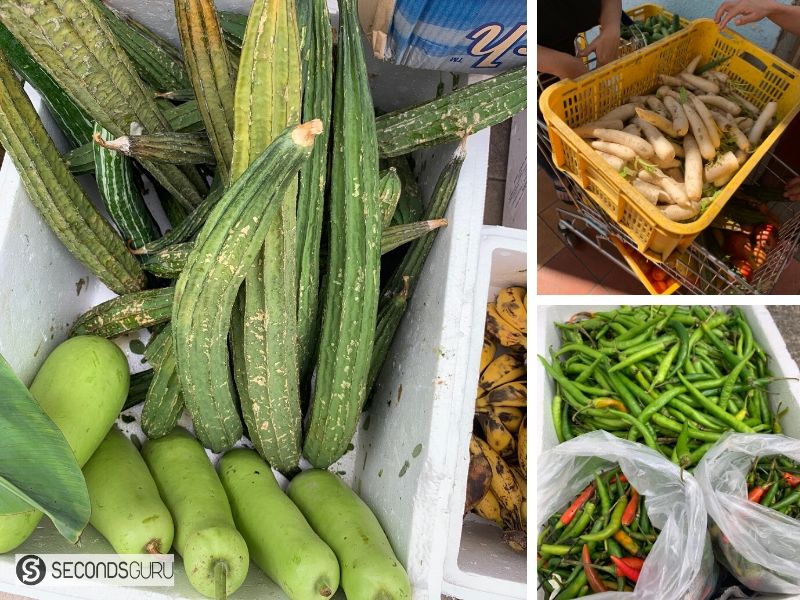
SG: What made you focus on food wastage and start SG Food Rescue?
DT: As a freegan dealing with large quantities of unwanted but usable stuff, I could have either focussed on food or merchandise. It would be challenging to do equal amounts of both as storage and distribution networks required are different.
I chose to focus on food because it was painful seeing so much edible food go to waste when there are 1 in 10 people in Singapore who can’t afford sufficiently nutritious food.
SG: What are some of the challenges that you faced when you started or ones that just don’t seem to go away?
DT: One of the challenges that we faced when we started (and it still doesn’t seem to go away) is having to navigate collaborations with other groups or organisations. It always starts innocently enough, when a group, company or organisation wants to collaborate with us for some reason. While we have had pleasant collaborations, we have also had our fair share of external parties that want to make use of us.
This often leaves a sour taste when we realise that we’ve been taken for a ride, or made use of. It leads us to becoming less trusting of other parties and more reluctant to work with other groups in the future. Nowadays, if we collaborate with other groups, we make sure that we have something to gain from it that we want, and if not, we turn down the invitation.
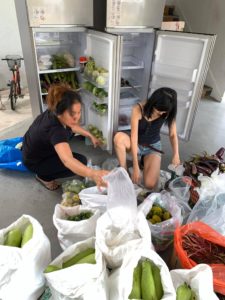
SG: Could you tell us briefly the process you follow when it comes to a typical food rescue?
DT: A food rescue has 3 components.
ONE: The Food Donor is the business or organisation that has surplus food to get rid of. If there is no rescue, the food is thrown away. We approach the business or sometimes they approach us, to see if instead of throwing away the food they could give it to us instead.
TWO: The Food Recipient is the individual, group or organisation that is willing to receive the rescued food. They require the knowledge and capability on how to process and salvage the rescued food; for example, how to peel off mouldy outer leaves of a cabbage or how to cut off spoilt parts of a papaya.
THREE: The Food Rescuer is the one who collects the food from the Food Donor and transports it to the Food Recipient. Depending on the type and quantity of food rescued, different modes of transport are used. This could be public transport, Grab, own transport, etc.
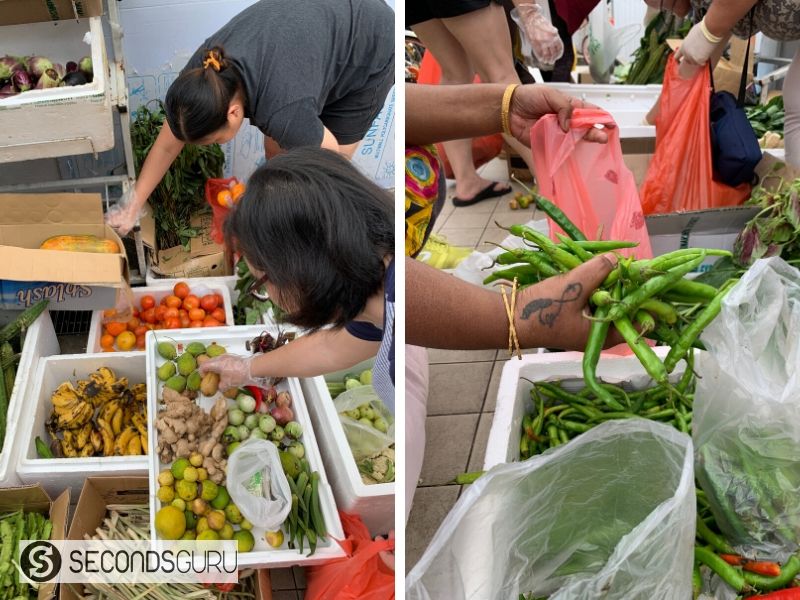
SG: Someone who is new to food rescue, what should they keep in mind before they dive in?
DT: Follow the following 6 guidelines for all food rescue programmes that you participate in. These will ensure that the food rescue operations can continue smoothly.
- You are there to rescue food first, and second to get food for yourself. Don’t get the order of priority mixed up. Focusing on the first will inevitably lead to the second.
- Rescue food at the convenience of the food donor; not your own.
- Most of the time, rescued food isn’t going to look like the food you can buy. There’s a reason why it’s not sellable. Often, some work or processing is needed before it can be consumed.
- You are fully responsible for the safety of the food you consume. If you’re not sure how to determine food safety, please ask other experienced food rescuers.
- Don’t take more than you can consume or give away. If you’re giving away rescued food, please handle it properly and ensure that the people you’re giving to understands it’s rescued food and know how to handle and process it properly.
- At any time, if you’re not sure what to do, ask to accompany an experienced food rescuer. Ask them to show you the ropes.
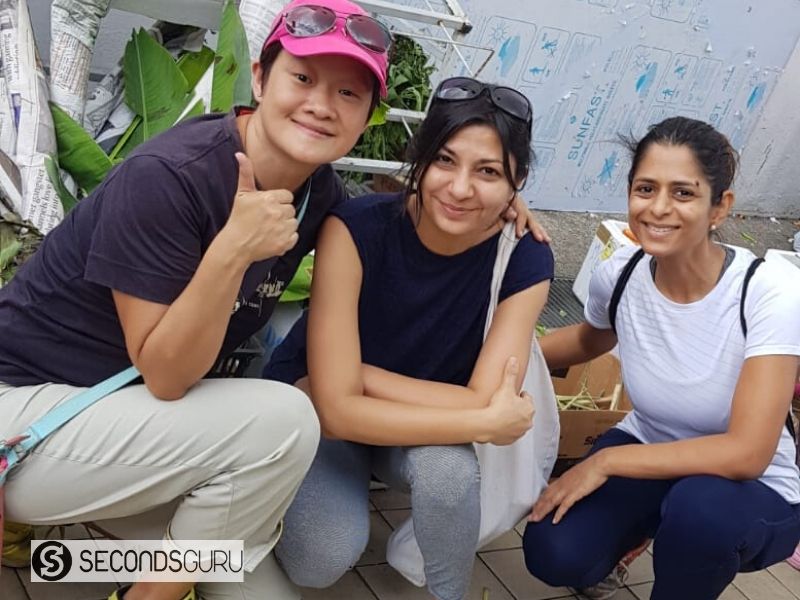
SG: Any memorable incident that made you feel that what you do makes a difference to others lives?
DT: I think the people whose lives have experienced the most difference are our food rescuers themselves. Let me list a few that particularly made an impact and kept me going..
There is a migrant worker who discovered that by coming to rescue vegetables regularly at our Little India Veggie Collection missions, he can save money on food and channel more money home to his family. Not only that, he is now in a position to help his other migrant friends do the same by sharing with them his surplus rescued food.
There are mothers who used to spend over $1000 a month on food to feed their families, now their food expenses have dropped to $200-300 a month. That’s a savings of almost $10,000 a year, which gets channelled towards other family expenses. In the case of one family, it even allowed the mother to work part-time and spend more time with her children.
There is a business owner who used to throw away all the surplus food that his shop couldn’t sell. For years, he wished something more could be done, but didn’t know what to do until he met us, a group of like-minded folk who provided a much needed consumption service for his unwanted and unsellable food. Working together towards the cause of reducing food waste, he has contributed so much to our cause, and we to the enrichment of his life.
There are the low-income people among our community who, in the past, relied on other people’s help, but now, with an abundance of food available to them, instead become the ones to help others. They have realised that it is possible to help other people even if they don’t have much by way of finances.
A while ago, a Malay lady contacted me. She said that she needed food but could not work due to several disorders. I connected her with someone who regularly had surplus food, and also invited her to participate in our various rescues. Recently I met her again at one of our rescues and I asked how she’s doing. Nowadays, she has no shortage of food and has taken to sharing her own surplus food with her neighbours. Instead of relying on handouts from others, she now knows how to get her own food in abundance, while helping to reduce food waste as well.
SG: Do you have any guidelines that consumers should keep in mind to be more eco friendly?
The most important thing for consumers is to learn to maximise the use of the food that you buy. Learn to buy food from smaller businesses and ask for the hard-to-sell food that all these businesses have. Usually the businesses will offer them to you for free or at a huge discount, creating a win-win outcome for both you and the business.
Get involved in our food rescues to learn how and then apply what you learn to your own life. Not everyone has to be like me and live completely off rescued food. Be like the family who can replace 80% of their food consumption with rescued food. The savings really are substantial, and doing this is also being eco friendly.
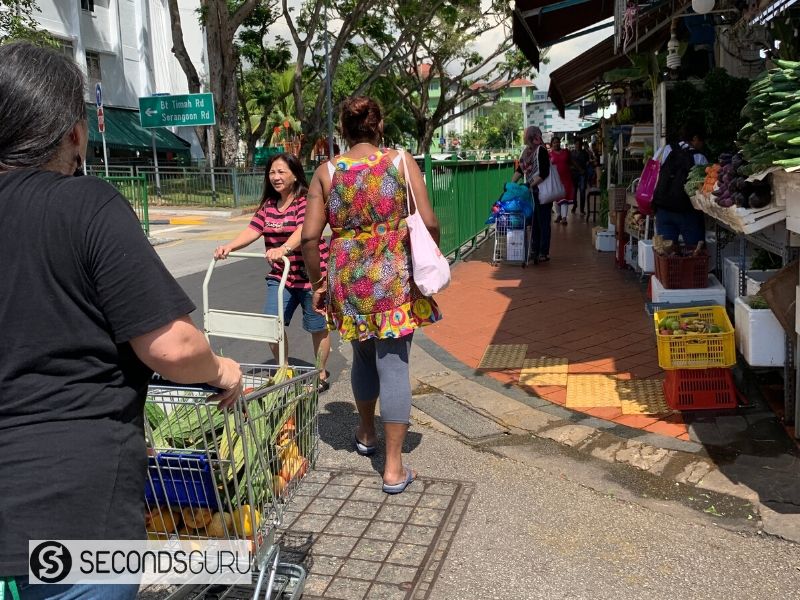
SG: What are your future plans for SG Food Rescue?
DT: Our immediate focus is SG Food Rescue’s financial sustainability. While we are a volunteer-run group, some of our activities require a more ‘full-time’ role, especially when it comes to coordinating and working with other organisations. We hope to be able to provide our ‘full-time’ volunteers with a stipend to keep them going and motivated.
SG: How can our readers join your volunteer effort? What time commitment should they set aside, and who should they get in touch with?
DT: All the details are available on our website, SG Food Rescue. Registrations to join our public programmes are there.
They can also join our Facebook group or follow us on Instagram.
Related Articles:
Zero Waste Bootcamp| Combating food waste at the grassroots in Singapore



0 Comments